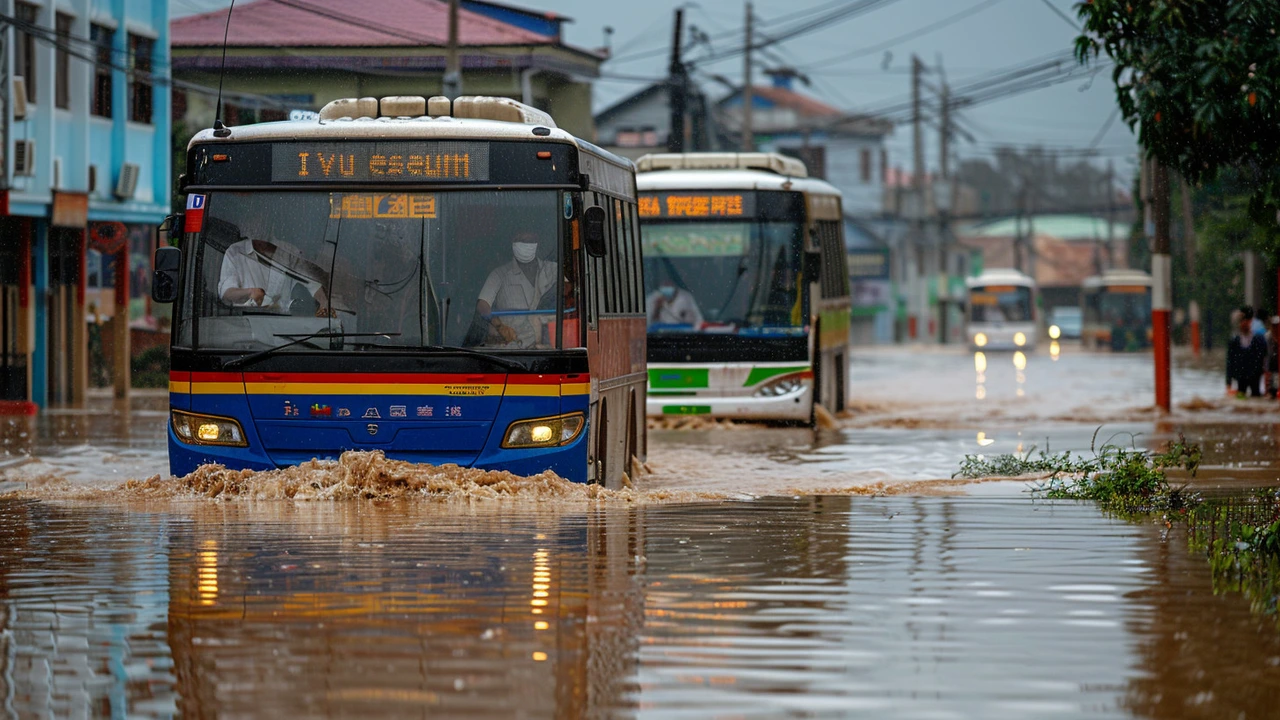Crisis in Tanzania: Cyclone Hidaya and Power Grid Failure Pose Severe Risk
As Tanzania grapples with the impending threat of Cyclone Hidaya, the nation faces compounded challenges brought on by a nationwide power outage announced by the Tanzanian Electricity Supply Company (TESCO). The severe weather event, characterized by heavy rainfall and strong winds, has signaled a crisis for the coastal regions, particularly Mtwara and Lindi, and now threatens to extend its impact to the major city of Dar es Salaam.
Current Situation on the Ground
The Tanzanian authorities reported that the power grid had failed under the strain of ongoing weather inconsistencies throughout the region. Over the past few weeks, East Africa, but particularly Tanzania, has experienced unprecedented levels of rainfall, which have led to widespread flooding. This environmental calamity has already claimed the lives of 155 people and disrupted the lives of over 200,000 residents. As Cyclone Hidaya draws closer, with forecasts predicting its arrival on the coastline, fears of exacerbating the already dire situation are mounting.
Preparation and Response Efforts
The Tanzania Red Cross Society, in response to the abnormally high rainfall, has initiated rigorous preparedness campaigns aimed at mitigating the impact of the cyclone. These campaigns are crucial as the meteorological department continues to track the progression of Cyclone Hidaya, urging residents to maintain vigilance and prepare for worsened conditions. As the cyclone escalates in intensity, disaster response teams are on high alert, focusing on the coastal areas most at risk.
Impact on the Community
The anticipated nationwide power outage only adds to the distress of the residents. TESCO’s warning highlights the vulnerability of the nation's infrastructure to natural disasters and extreme weather events. The lack of electric power will likely hinder emergency and relief efforts, making it increasingly difficult to communicate warnings and coordinate response strategies effectively.
Historical Context and Future Concerns
The region's susceptibility to climatic disturbances isn’t new, but the scale at which they are occurring, as seen with Cyclone Hidaya, is alarming. Historically, such weather extremes have prompted discussions about improving infrastructure and enhancing preparedness measures to better handle potential future crises. With climate change intensifying the frequency and severity of such events, Tanzania, and indeed all of East Africa, may need to consider more robust approaches to disaster management and recovery planning.
In conclusion, as Cyclone Hidaya moves ever closer, the hearts and minds of Tanzanians are focussed on weathering this storm. With over 155 lives already lost to the recent floods, and many more disrupted, the approach of Hidaya is a stark reminder of the ongoing challenges posed by climate change and infrastructural weaknesses. The coming days will be a crucial period for government agencies, emergency services, and the international community as they collaborate to safeguard lives and limit damage.

Comments